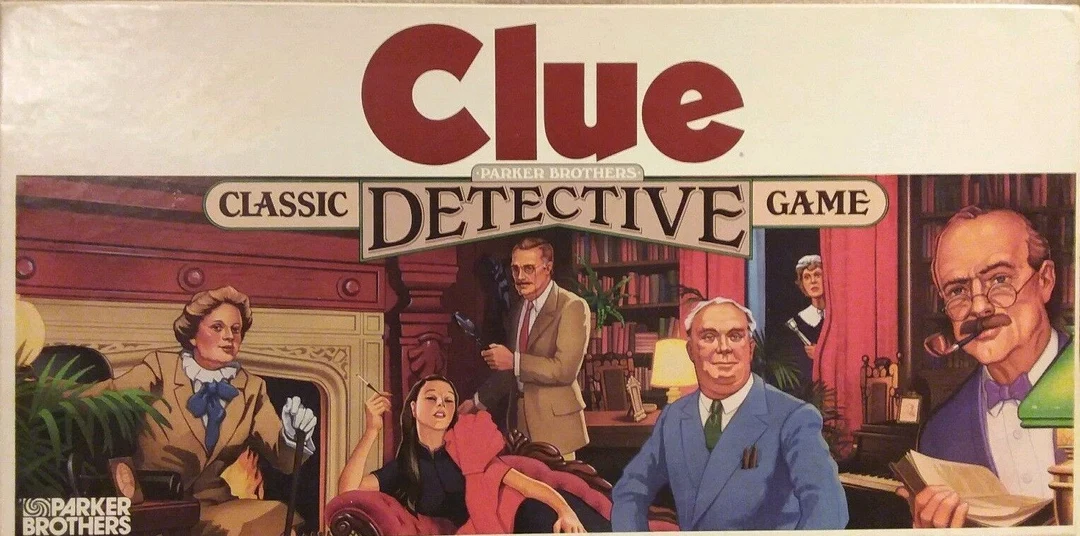I remember playing Clue with friends this past weekend on a rainy afternoon, all of us huddled around the board. Of course, as Stanford nerds, we silently scribbled and smirked at each other, each trying to be the winner of the game. As the tension built, I made my final accusation with sweaty palms, uncovering the truth to everyone’s groans and laughter. The game masterfully captured the essence of detective fiction, and the careful interplay between mechanics and narrative kept us hooked from start to finish.
Clue, created by Anthony E. Pratt and published by Waddingtons in 1949, is a classic mystery board game where 2-6 players take on the role of detectives aiming to solve a murder case. The target audience primarily includes families and casual gamers,. It’s available on various platforms, from physical board games to digital versions. Clue weaves narrative into its mechanics by using its board architecture and deduction elements to guide players through a tense, story-driven mystery. The interplay between movement, deduction, and accusation creates engaging loops and arcs that both heighten suspense and reveal clever design choices.
The mansion in Clue is divided into rooms connected by corridors, secret passages, and doors, representing possible crime scenes. Players move across the board using dice rolls, choosing which room to investigate. This movement decision becomes a key part of the strategic gameplay, as each player must carefully plan their investigation route to maximize information gathering. Secret passages offer shortcuts between opposite corners of the mansion, adding a layer of strategy to movement choices. Corridors, in contrast, slow movement, creating tension as players are forced to consider risk versus reward when trying to reach specific rooms. The room layout successfully balances exploration with player interaction, as players often find themselves converging in the same room, encouraging accusations and forcing strategy shifts. However, randomness in movement (via dice rolls) can sometimes limit player agency. It seemed that during every round, one player was stuck between a few rooms, unable to roll far enough to get across the board.
Players gather clues by suggesting a combination of a suspect, weapon, and room. Other players must disprove the suggestion by revealing one relevant card if they hold it. This process of deduction narrows down the possibilities and forms the backbone of the storytelling. Each suggestion and subsequent disproving forces players to recalibrate their theories. Incorrect accusations, if the solution is guessed wrong, eliminate a player from the game, adding high stakes to each decision. Players use detective notebooks to mark off disproved clues, creating a persistent arc that slowly narrows down the possibilities. The deduction mechanics cleverly mimic a detective’s investigative process, providing players with just enough information to keep them guessing.
Once confident, a player can make an accusation, revealing the cards in the confidential file. If correct, the game ends with that player solving the case. This endgame loop creates an intense final act as players rush to gather information before anyone else.
Clue embodies both story arcs and gameplay loops. Players loop through rooms, seeking clues and refining their suspect list. Each player’s turn loops through the suggestion-disproval process, while the game starts with total uncertainty, gradually building tension as players refine their deductions and identify patterns, culminating in the final accusation. Incorrect accusations lead to player elimination, creating a dramatic rise in tension as the mystery approaches its climax.
The game incorporates multiple types of fun. The challenge lies in deducing the correct solution through logical reasoning and bluffing, while the exploration of the mansion creates a sense of discovery. The race to solve the mystery adds a competitive atmosphere, and the unfolding mystery and each player’s unique deduction path create a personalized story.
Despite its simple mechanics, Clue succeeds in engaging players with its blend of deduction, competition, and exploration. The game creates a tense and engaging narrative through its architectural design and clue-gathering system. The game sometimes falters due to the randomness of movement and occasional stalling when players are stuck far from key rooms, but overall, it achieves its goal of providing an accessible yet challenging mystery-solving experience.
Currently, suspects are purely cosmetic and don’t impact gameplay beyond flavor. Giving each suspect unique abilities could introduce varied strategies and more player agency:
- Miss Scarlet:
Can make suggestions without being in a room - Colonel Mustard:
Can disprove suggestions using two cards (forcing a player to recalibrate their deductions). - Professor Plum:
Gains extra information whenever he makes a suggestion (e.g., sees two cards instead of one). - Mrs. Peacock:
Can move to any room once per game using her wealth and connections. - Reverend Green:
Has a free passage to secret rooms due to his moral persuasion. - Dr. Orchid:
Can search adjacent rooms for clues due to her scientific expertise.
In summary, Clue demonstrates how tightly woven mechanics and architecture can immerse players in an engaging mystery narrative, showcasing Pratt’s clever design in creating loops and arcs that turn every suggestion and accusation into a story of its own.



